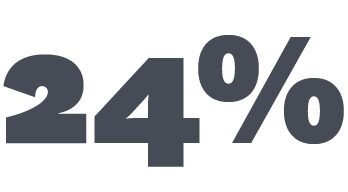About
The Technology and Applied Computing Program (now TAC, formally known as the Information Technology Program or ITP) is an academic program in the School of Advanced Computing within the USC Viterbi School of Engineering, whose mission is to provide students, faculty, and staff with high-quality instruction in applied technology. In addition to practical, hands-on experience, students will engage in theoretical discussions of current trends, applications, and developments in Applied Computing.
TAC offers over 75 courses taught by faculty with professional industry experience. More than 2000 students enroll in TAC courses each semester. Faculty are leaders in integrating emerging and cutting-edge technologies in the classroom, and courses stay up-to-date so that students can graduate with future-oriented skillsets.
Students can choose from a wide range of electives and 15 minor and specialization programs. Additionally, TAC coordinates with departments at the Viterbi School of Engineering and the Dornsife College of Letters, Arts, and Sciences to offer majors in Data Science (BA) and Intelligence and Cyber Operations (BA).
No matter which program at TAC students pursue, they gain:
- practical, hands-on experience with the latest programming languages and tools,
- critical insight into technology’s increasing impact on our world,
- improved problem-solving skills,
- and sharpened written, visual, and oral communication skills.
Why Choose TAC?
As technology becomes increasingly integrated with our everyday lives, technical skills such as coding, analyzing data, and creating websites (just to name a few) are becoming increasingly valuable for most - if not all - career paths!
Perhaps you’re a pre-law student looking into cybercrime investigation. Maybe you’re a journalist looking to support your stories with powerful data. You could be a business student looking to know how software infrastructure works so you can effectively manage a team of software developers.
The point is, TAC strongly believes that technology is for everyone, and TAC embodies this concept with the phrase:
X + Tech
where "X" = any USC major, and "Tech" = technical knowledge and skills offered by TAC.
TAC Programs
TAC has a variety of programs available to USC students.
- A TAC minor usually consists of 4 to 6 classes and will be the most comprehensive program offered.
- A TAC specialization requires fewer courses to complete and are great for students who don’t have enough time or space in their schedule for a full minor.
- TAC also has plenty of classes that can be taken as a standalone elective, for students who want to learn practical skills in one or more areas of interest.
- TAC has also collaborated with other departments in developing 2 Interdisciplinary Majors: Intelligence and Cyber Operations (BA), Data Science (BA)
Minors
Courses Required
4-6
Minimum Semesters
3-4
Eligibility
undergraduates
Advantages
complement any major field with a high-tech skillset
Specializations
Courses Required
2-3
Minimum Semesters
2-3
Eligibility
all students
Advantages
great fit for students who don't have space for a full minor
Electives
Courses Required
1+
Minimum Semesters
1+
Eligibility
undergraduates
Advantages
learn skills wherever classes fit into your schedule
History
For almost four decades, TAC (formerly ITP) has served the university by offering courses in programming and advanced software, providing cutting-edge computing labs and resources, and transforming its curriculum to keep students, faculty, and staff up-to-date with advances in technology.

Statistics
Department Statistics

86% of students pursuing our minors are studying in non-engineering majors.

minor programs
(each with a corresponding specialization)

courses
Department Statistics

Over four billion people globally are active internet users.1

There were 178.96 million records exposed in 1,579 discovered data breaches in the United States in 2017.2

Analysts valued the global video games market at $78.61 billion in 2017.3

The U.S. Department of Labor projects a 24% growth in jobs for software developers between 2016 and 2026.4
Faculty
We have 18 full-time faculty and over 30 part-time faculty with jobs in industry. Our faculty have been recognized with industry and university awards for innovative work in technology and service in teaching. Faculty also work with different programs on campus, including Viterbi Technology Innovation and Entrepreneurship.

full-time faculty members

part-time faculty members
Alumni
Alumni from our minor and specialization programs use their technical skills in a wide range of career fields and industries — not just in high-tech fields. And graduates of our programs often pursue work directly related to their TAC courses — including as data analysts at Amazon and Microsoft, software developers at Raytheon, cybersecurity analysts at Visa and PwC, and ERP analysts at KPMG and Deloitte. Our alumni also pursue graduate programs in fields like data science and cyber security.
Alumni updates can be sent to Eric Perez (ejperez@usc.edu).
References
- We Are Social. “Global Digital Population as of April 2018 (in Millions).” Statista – The Statistics Portal, Statista, www.statista.com/statistics/617136/digital-population-worldwide/, Accessed 9 Jul 2018.
- Identity Theft Resource Center. “Annual Number of Data Breaches and Exposed Records in The United States from 2005 to 2017 (in Millions).” Statista – The Statistics Portal, Statista, www.statista.com/statistics/273550/data-breaches-recorded-in-the-united-states-by-number-of-breaches-and-records-exposed/, Accessed 9 Jul 2018.
- Best The News. “Value of The Global Video Games Market from 2011 to 2020 (in Billion U.S. Dollars).” Statista – The Statistics Portal, Statista, www.statista.com/statistics/246888/value-of-the-global-video-game-market/, Accessed 9 Jul 2018.
- Bureau of Labor Statistics. “Software Developers.” U.S. Department of Labor – Occupational Outlook Handbook, https://www.bls.gov/ooh/computer-and-information-technology/software-developers.htm, Accessed 20 Jun 2018.


